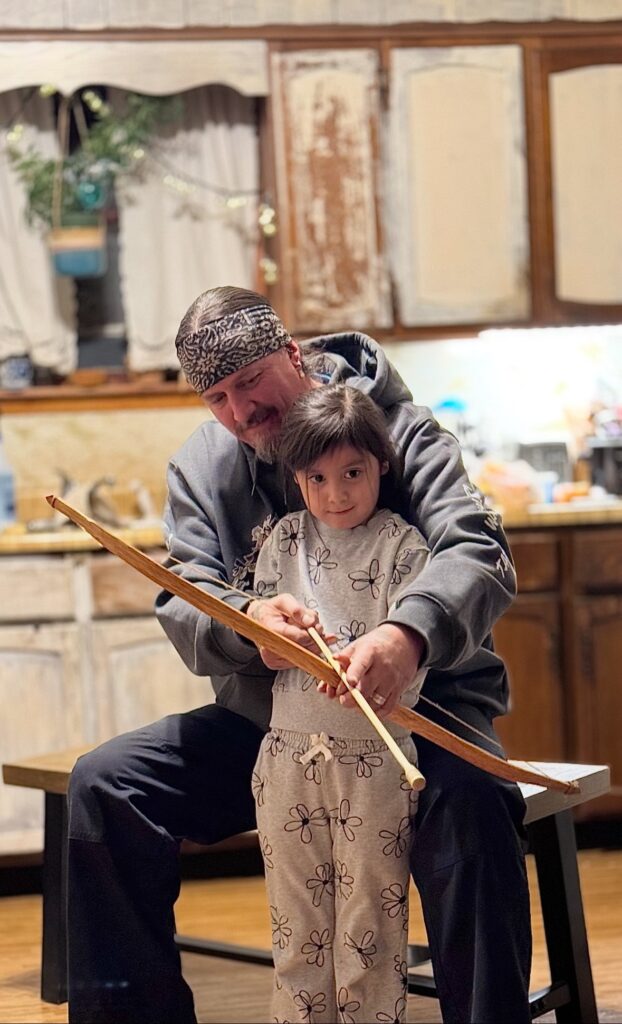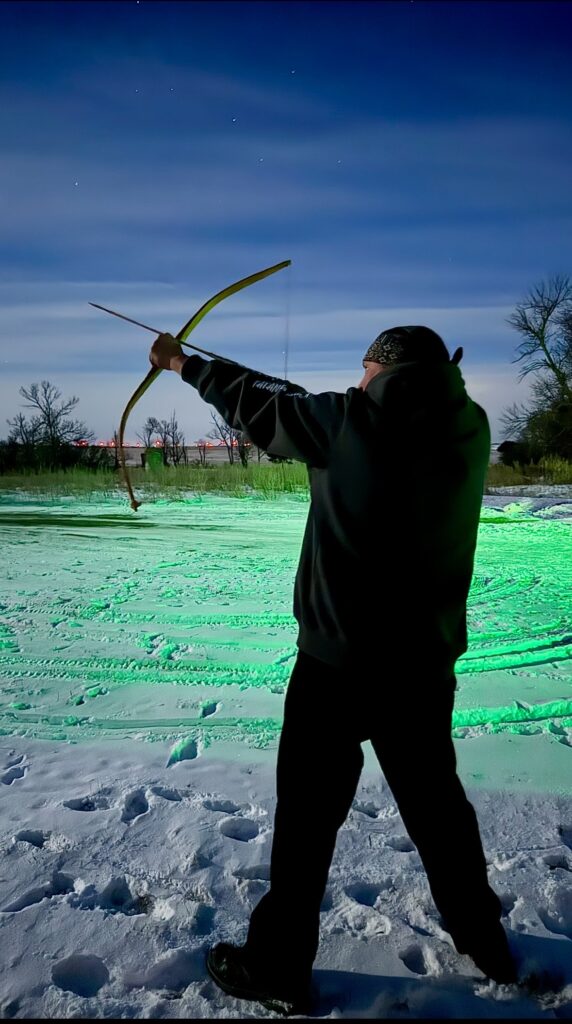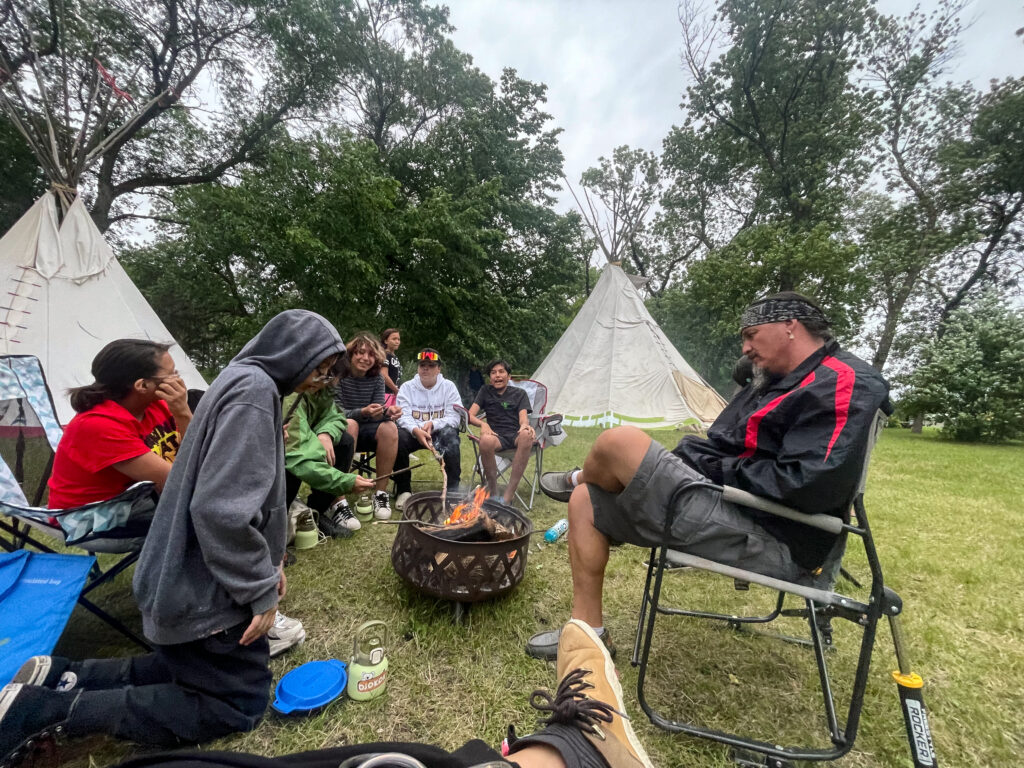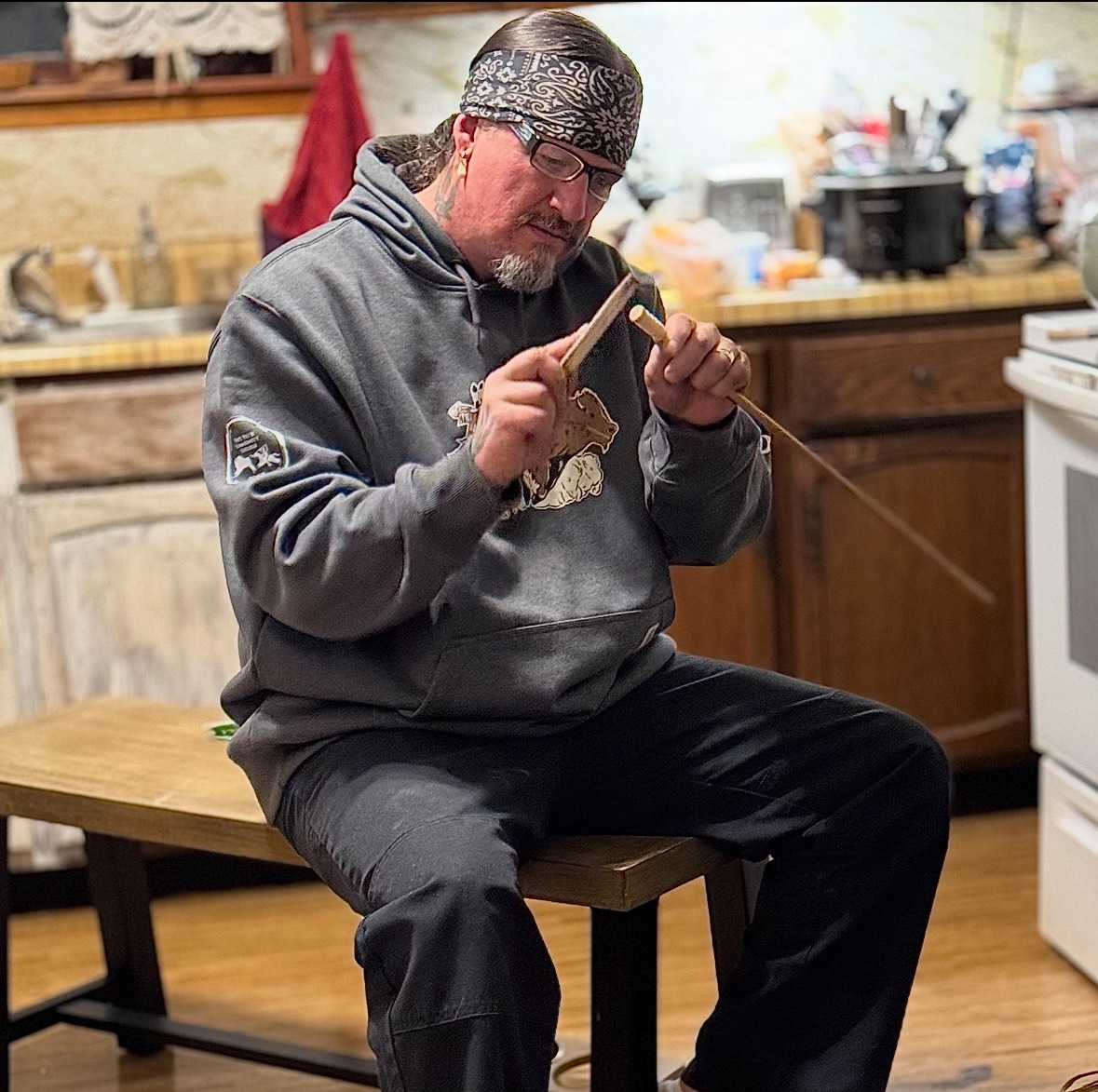“I was a statistic growing up,” says Jeremy Red Eagle of the generational ripple effects of colonization. “I never went to high school. I found myself in trouble a lot. I struggled with drugs and alcohol and addiction a lot.”

When he turned 30 years old, though, Red Eagle decided he was going to change his life. “I got sick and tired of being sick and tired. For me, the way to change my life was through my culture.” That’s the guiding force behind Red Eagle’s bow-making work today.
In 2014, he and his wife left Montana for South Dakota’s Lake Traverse Reservation so Red Eagle could reconnect with his Dakota roots by learning the language. “The more we reclaim who we are—our language, our way of life, our history, everything that happened to us both good and bad—it grounds us and gives us a sense of identity,” he says.
At his wife’s suggestion, he looked into a Dakota language teaching certificate program at Sisseton Wahpeton College. “I enrolled, and the rest is history,” Red Eagle says. The college offered traditional arts workshops, and Red Eagle took all of them. Having always been interested in archery, once he got to bow-making, the craft spoke to him.
He spent years supplementing his formal training by speaking to elders and learning about the long traditions of bow-making from around the world. “I’m really big on not staying stuck in the past, but using it as a foundation to move us forward. That’s why I do everything in my power to learn how we did things a long time ago, but also acknowledging that we live in a different time and not being afraid to adapt and adjust,” Red Eagle says.
Not only are the bow and arrow tied to Dakota creation stories, “to me, the bow and arrow symbolize being able to provide and also protecting your people. There’s a spiritual significance to them.”
Building on a background running a youth program in Montana, today Red Eagle works with Native American communities of all kinds to revive culture through bow-making and other crafts, but delights in working with Indigenous young men specifically. “I help our young men reconnect with their roles and responsibilities in our community because that was stripped of them through boarding schools.”



Red Eagle’s holistic approach to bow-making is customized to the needs of the community he’s working with. This means his classes can include everything from responsibly sourcing the necessary wood to the intricate beadwork and quillwork that embellishes the final product. Others swap traditional, natural materials like bone and animal sinew with modern materials like metal for accessibility.
For Red Eagle, receiving the 2024 Midwest Culture Bearers Award gives him the ability to focus on bow-making amid his broader art practice. “Starting this spring, my goal is to bring back horseback archery.” Plus, “my grandson is two. I want him to grow up with a bow in his hand.”
Jeremy Red Eagle is a 2024 recipient of the Midwest Culture Bearers Award, which celebrates and financially supports the work of Midwest culture bearers and folk arts practitioners.
The Midwest Culture Bearers Award is supported by Margaret A. Cargill Philanthropies with additional support from the National Endowment for the Arts for project management.
